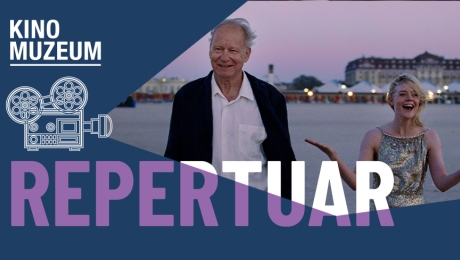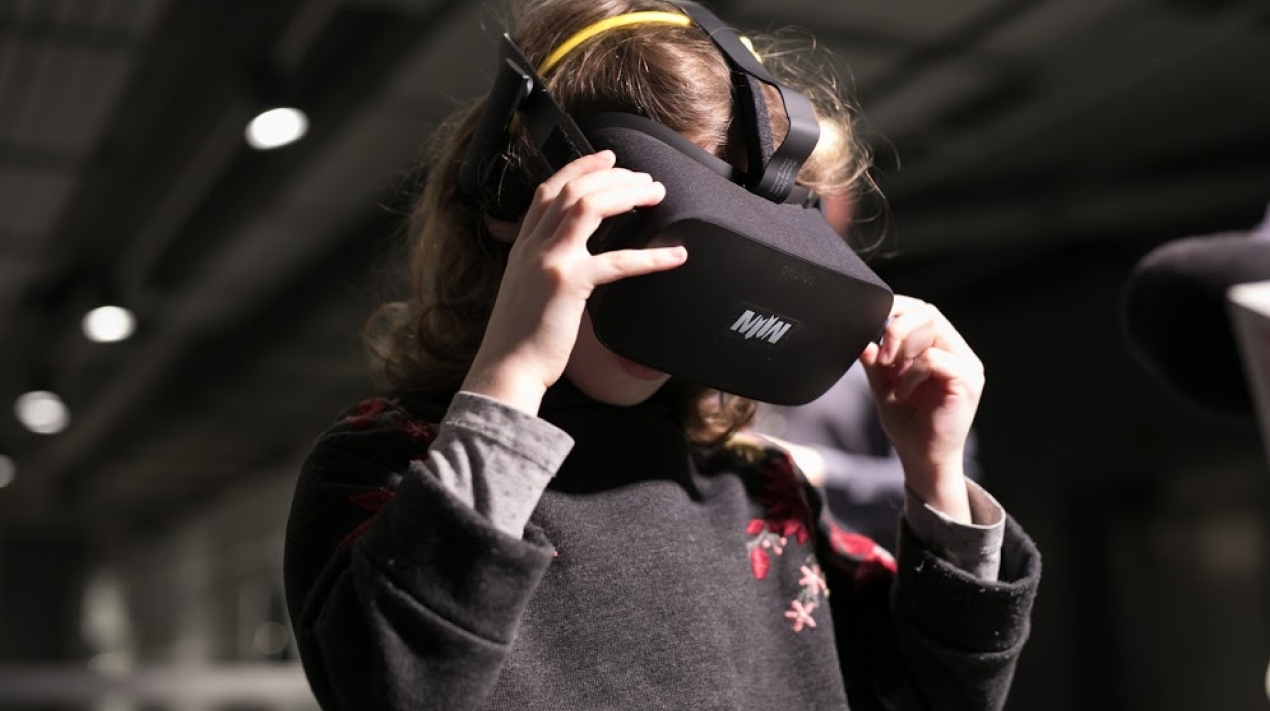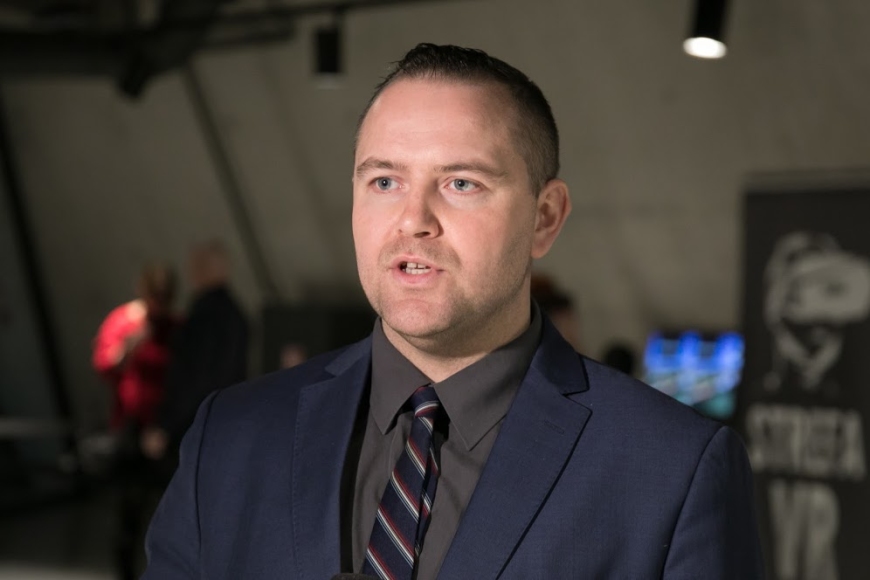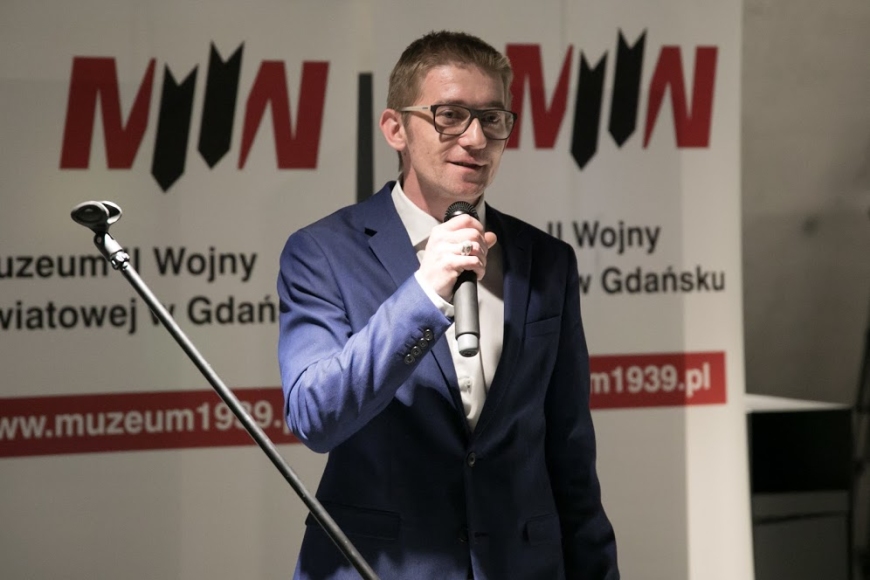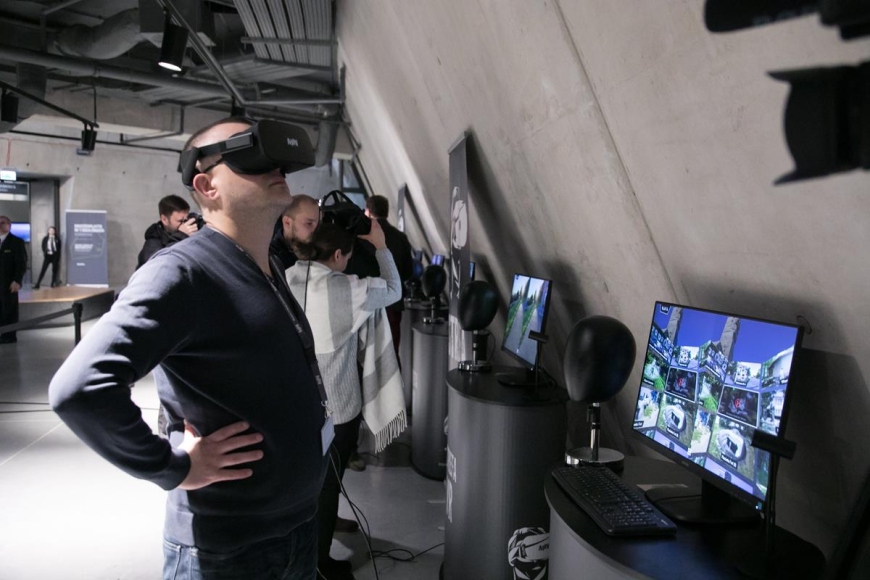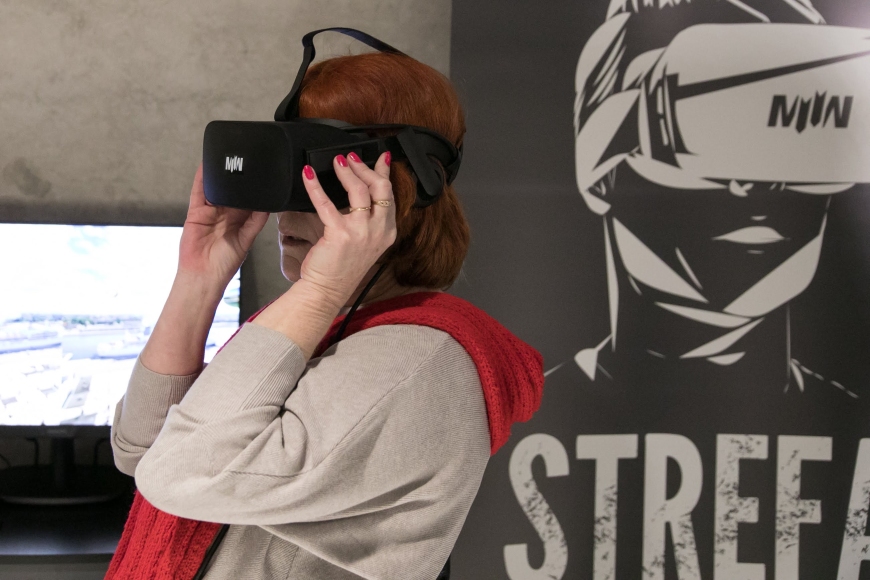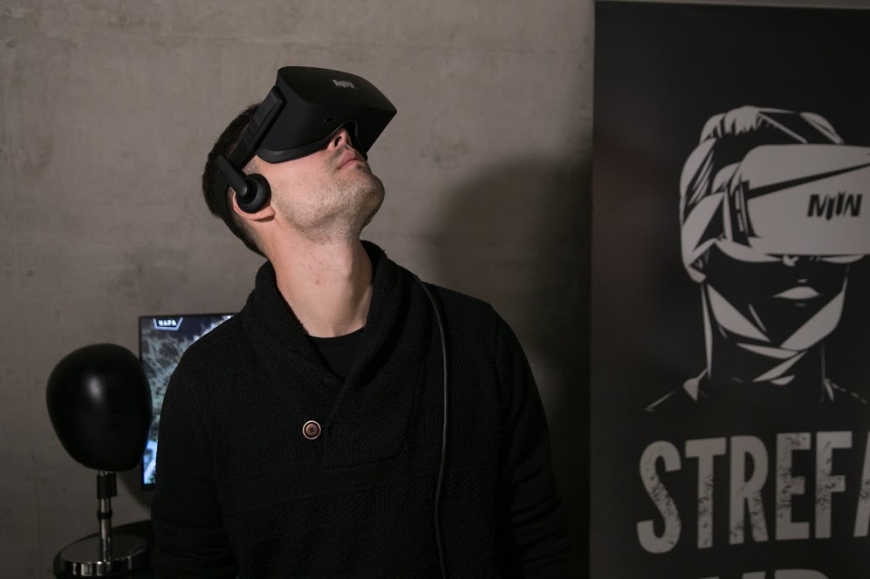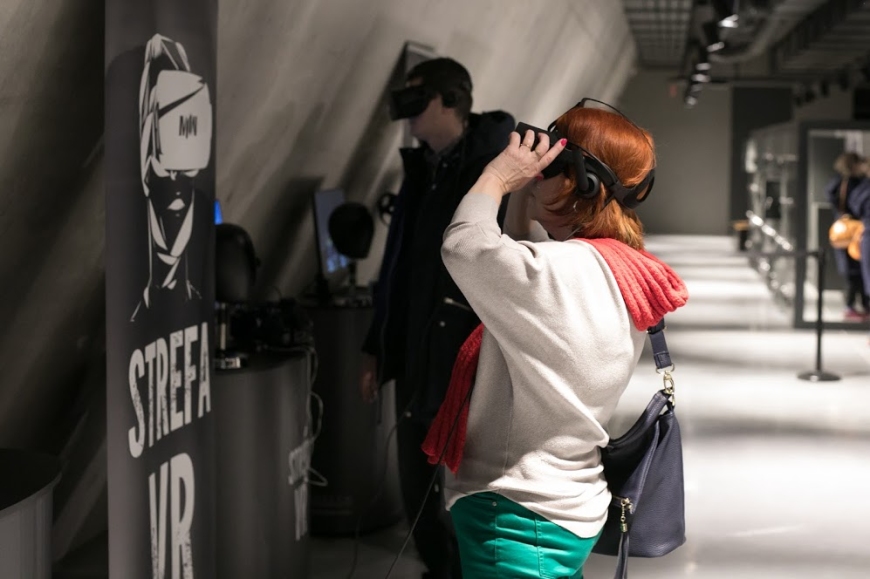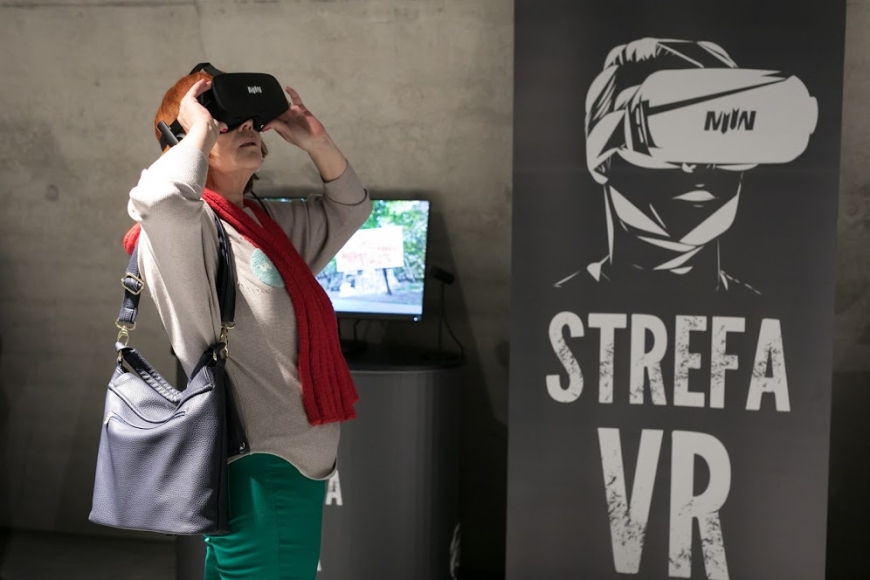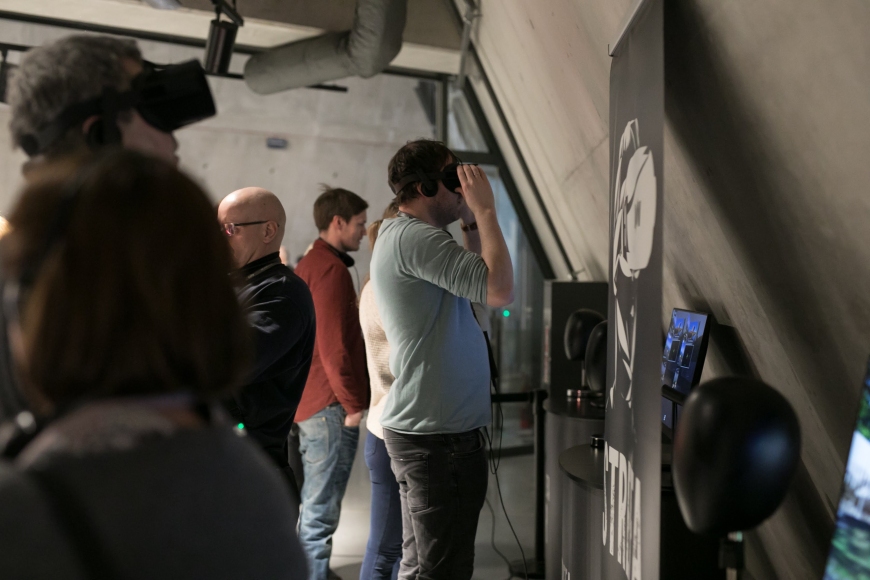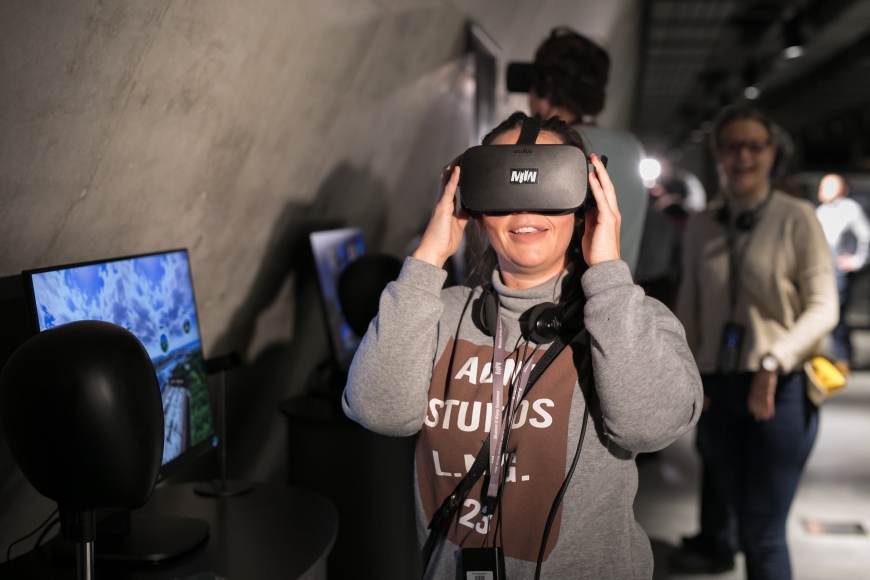The VR zone in the Museum of the Second World War
The Museum of the Second World War in Gdańsk has opened the only VR Zone of its kind in Europe with six permanent stations. Thanks to it, visitors from all over the world will be able to participate in the "Virtual walk through Westerplatte". Our walk consists of 100 original panoramas of Westerplatte - also from a bird's eye view, 40 meticulously incorporated archival photographs, over 30 recordings of historical accounts and soundtracks, including accounts of the defenders of the Military Transit Depot.
March 30, 2018, at 12:00 in the Museum of the Second World War, at the entrance to the main exhibition, the first virtual reality zone in Poland was opened "\/ VR zone built in a museum facility. This is a great day for Polish museology and a bold step forward in the use of new technologies in Polish cultural institutions. The pioneering project of the Gdańsk museum was presented by the Director of the Museum of the Second World War, Dr. Karol Nawrocki:
This is a special day for the Museum of the Second World War in Gdańsk and for museology in general, because this is the first VR walk of this kind in a museum, of which I was informed by the Head of the Promotion Department, Mr. Marek Krzemiński, to whom we owe this walk and whom on behalf of the Museum of the Second World War I would like to thank for his commitment and implementation of this project. (...)
As far as the walk is concerned, although it is virtual for now, it reveals our ambitions towards Westerplatte. After 28 years of the functioning of the III Polish Republic, I think that this virtual walk should be transformed into a real museum of the Museum of Westerplatte and the Second World War of 1939. This is one of our main goals, since following the decision of the Minister of Culture and National Heritage, the Westerplatte Museum became a part of the Museum of the Second World War in Gdańsk.
We draw from this synergy today by showing this walk and combining what is so important in Polish history: the archetype of Polish attitudes during World War II, the history of heroic defense of Westerplatte, the results of research of our archeologists from the Westerplatte Department, which provided us with nearly 5 thousand exhibits - tangible and ready to be viewed at the exhibition (...) and we combine all of this with a modern resource – a VR walk. We are all the result of the past - it is impossible to talk about the present and the future without the past, which is why the Museum of the Second World War, in a scientific way, embraces new technologies. These 100 Westerplatte panoramas, 40 photographs that complement these panoramas and 30 audio recordings show that you can combine the historical narrative of the Museum with the latest multimedia source.
The director introduced the originator of the project, Mr. Marek Krzemiński, the Head of the Promotion Department of the Museum of the Second World War.
Ladies and Gentlemen, we are opening the VR Zone at the Museum of the Second World War and this is the first museum facility of its kind in Europe. New technologies allow us to create new channels for sharing national heritage and this is the result of this thinking. The Museum wants to be a leader on the world cultural map as technology progresses around the world.
That's why we created the "Virtual walk through Westerplatte", giving viewers the opportunity to watch it not only on the Internet, but also through the VR Zone, which will be available to our visitors completely free. It would not have been possible without the involvement of a team of connected museums: the Westerplatte Department and the Museum of the Second World War. Special thanks to our archaeologists under the direction of Mr. Wojciech Samól and the person who put a lot of work into analysing photos - our photographer, Mr. Mikołaj Bujak. Therefore, the VR Zone is now opened! Welcome! Please use and enjoy the virtual reality in the Museum of the Second World War.
A virtual walk is a form of multimedia presentation of an object or a place in a full 360-degree perspective around its own axis and 180 degrees in the up-down plane, completely interactive through cursor movements on the screen. Thanks to this virtual tour, the viewer has the impression of being physically in a specific space. He has full control of moving around the object/place, looking in any direction and zooming in any part at any time for details.
"Virtual walk through Westerplatte" is a new technology service, providing users of VR stations a certain number of 360° panoramas, creating a virtual walk around the former Military Transit Depot at Westerplatte and the Museum of the Second World War, including the following panoramas:
- panoramas made with a drone over the Westerplatte Fortress and the Museum of the Second World War;
- a virtual walk around the open-air exhibition "Westerplatte: Resort - Bastion - Symbol", by the main building, bunkers and the more important places on the peninsula (Fallen Defenders of Westerplatte Cemetery, Guardhouse No. 5, Guardhouse No. 4, Guardhouse No. 3, Guardhouse No. 2, Guardhouse No. 1, Officers Villa, NCOs Villa, NCOs Casino, Old Barracks, Fort Outpost, Fort II Outpost, railway station, Westerplatte marina, Seagull Rampart, ammunition warehouse, Monument to Coast Defenders and vicinity);
- the building of the Museum of the Second World War from the outside - western wall, eastern wall, administrative part, view of the building from behind the canal, view from the Lime Bridge, administrative part;
- inside the Museum - main entrance, information point on level -1, in the main exhibition section, on the defense of Westerplatte (level -3).
"Virtual walk around Westerplatte" improves children's and youth's education, facilitates visits from tourists, helps people with disabilities, promotes interest in the history of World War II, teaches through entertainment and constitutes a clever way to promote the cultural institution.
Almost a thousand people have seen the play "Scars of memory – the story of Jan Karski" performed during four performances on the stage of the Museum of the Second World War. The unforgettable Jerzy Zelnik and Sebastian Ryś boldly presented the story of the legendary emissary who wanted to awaken the conscience of the world and stop the Holocaust.









